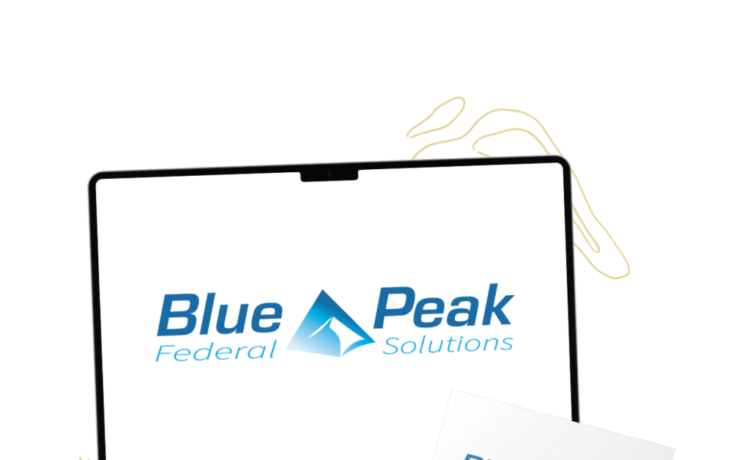A brand is more than a logo or a name. It’s the sum of how people perceive your business, what it stands for, and how consistently you deliver on promises. Whether your business is from the Washington Metropolitan area to the west coast, below are the essential components you’ll want to define and align when building or refining a brand.
1. Brand Purpose & Mission

This answers the “why.” Why does your brand exist beyond making money? Purpose gives your brand heart and direction. Your mission is how you deliver on that purpose, translating belief into measurable action. A clearly defined purpose creates alignment across your team and helps guide decisions that stay true to your long-term vision. When your audience understands the deeper reason behind what you do, they’re more likely to connect emotionally with your brand and become loyal advocates rather than one-time customers.
2. Brand Values
Values are the principles that guide your decisions and behavior, forming the moral framework of your brand. They define what your business stands for and influence how you approach every project, partnership, and interaction. These values should be authentic—not buzzwords—but qualities you demonstrate daily in the way you treat customers, employees, and stakeholders. When your values are visible in your actions, they help build trust, attract like-minded clients, and create a consistent experience that reinforces your reputation.
3. Target Audience & Market Positioning
Define who your ideal customers are by understanding their needs, motivations, and pain points. Identify the people most likely to benefit from your products or services and focus on what matters most to them. Once you have a clear picture of your target audience, evaluate how your brand fits within the market—what others are offering, where gaps exist, and how you can fill those gaps in a meaningful way.
Positioning is about owning a distinct place in your audience’s mind. It’s the perception that sets you apart from competitors and defines why customers should choose you. By communicating a clear and consistent position, your brand becomes not just another option but the preferred choice that aligns perfectly with your audience’s goals and expectations.
4. Unique Selling Proposition (USP) / Differentiation
What makes your brand different or better is the unique combination of qualities, expertise, and values that no competitor can replicate. Your Unique Selling Proposition (USP) captures that distinction and communicates it clearly to your audience. It might be the depth of your experience, the precision of your process, the creativity of your design, or the personal attention you bring to every project. A strong USP isn’t just a tagline—it’s a promise backed by consistent delivery. It should give customers a clear reason to choose you over others, showing how your approach provides greater value, quality, or results that directly meet their needs.
5. Brand Identity & Visual Elements

This covers your name, logo, color palette, typography, imagery style, iconography, and every other visual cue that communicates who you are. These design choices form the foundation of your brand’s personality and set the tone for how your business is perceived across all platforms. From your website and marketing materials to packaging and signage, each element should work together to create a unified impression. Consistency in visual identity helps people recognize you instantly, builds trust through familiarity, and reinforces the professionalism and reliability behind your brand. Over time, a cohesive visual presence turns recognition into loyalty.
6. Brand Voice & Messaging

How you speak to your audience defines the personality of your brand and shapes how people connect with it. Your tone, style, and choice of words should consistently reflect your values, mission, and the experience you want customers to have when engaging with your business. Whether you’re writing a website headline, an email campaign, or a social post, your language should feel intentional and aligned with your brand’s character—confident and refined, friendly and approachable, or bold and innovative.
7. Brand Experience & Customer Interaction
Every touchpoint, from your website and customer service to delivery, packaging, and social media, contributes to how people perceive your brand. Each interaction leaves an impression that either strengthens or weakens the trust you’ve built. The goal is to create a seamless, unified experience that feels intentional and authentic at every stage. When your brand delivers on its promises consistently—visually, verbally, and experientially—it reinforces credibility and builds loyalty. Customers begin to associate your brand not just with a product or service, but with reliability, care, and a standard of excellence they can depend on.
8. Brand Promise & Trust
Your brand promise is the commitment you make to your customers—the assurance of what they can expect every time they interact with your business. It reflects the standards you hold yourself to and the experience you intend to deliver, from first impression to final result. A strong promise goes beyond marketing language; it’s demonstrated through reliability, quality, and consistency in every service or product you provide.

When you consistently meet or exceed that promise, you build trust and strengthen brand equity—the intangible value that keeps customers returning and recommending you to others.
However, when the promise is broken or inconsistently upheld, credibility erodes quickly. Customers remember how your brand made them feel, and a single lapse can undo years of goodwill.
A clear, authentic, and consistently delivered brand promise creates confidence, loyalty, and lasting relationships.
9. Brand Culture & Internal Alignment
Your team must live your brand values and mission every day. A strong internal culture turns those values from words into actions, ensuring your employees embody the same principles your brand communicates to the public. When your team believes in the mission, their work naturally reflects authenticity and consistency. Internal alignment creates a unified voice, improves collaboration, and strengthens the overall customer experience. A brand’s reputation isn’t built solely through marketing—it’s reinforced through the people behind it who deliver on its promises with integrity and pride.
Why aligning all components matters
When brand elements are disjointed—say your visuals promise high-end luxury but your service is inconsistent—customers sense the mismatch. A cohesive brand builds clarity, trust, and recognition over time. As Stride Creative states, inconsistent brand components “turn people off” when they conflict.
Get a free quote and plan of action today to ignite your brand with R.L. Roberts II Design, LLC:
















